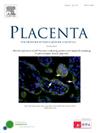Maternal body composition and the placental-fetal unit under maternal high-fat feeding partially improve by metformin treatment or lifestyle interventions during pregnancy in a mouse model
IF 2.5
2区 医学
Q2 DEVELOPMENTAL BIOLOGY
引用次数: 0
Abstract
Introduction
Studies showed that metabolic imbalances during pregnancy in obesity impair the maternal-fetal axis, resulting in fetal growth disturbances with higher risk later in life. Since research has linked many of maternal and fetal sequelae to placental dysfunction, we tested if treatment with an anti-diabetic drug (metformin) or lifestyle interventions improve maternal body weight, placental status or fetal growth.
Methods
Mice were either fed a control or high-fat diet. After mating, high-fat diet mice were split into 4 subgroups, 1 received no intervention while the other 3 received either metformin treatment, a nutritional intervention (NI) or an exercise intervention (RUN). At gestational day 15.5, mice were sacrificed.
Results
All interventions improved body weight of high-fat diet dams, but only NI and RUN maintained fetal growth compared to HFD. Investigation of the placenta showed that (i) NI reduced lipid accumulation in the labyrinth zone (LZ) but neither NI nor RUN attenuated calcification and oxidative stress. Endothelial gammaH2AX staining was decreased in the LZ by both NI and RUN. (ii) Metformin did not attenuate lipid accumulation in the LZ, placental calcification and oxidative stress, however, protein levels of the endothelial cell marker CD31 were restored in whole placenta lysates. No changes were detected for fetal vessel capillary surface or length of the LZ under any intervention group.
Discussion
Although all tested interventions had beneficial effects on the mother and the placental-fetal unit, NI seems to be most promising. Our findings highlight that preventive strategies for women with obesity should aim for pre-counseling advisory service. In particular, NI and RUN protected from endothelial stress response and metformin was vasculo-protective, offering strategies to preserve the physiological placental-fetal unit and materno-fetal nutrient supply.

在一个小鼠模型中,母体高脂肪喂养下的母体身体组成和胎盘-胎儿单位在怀孕期间通过二甲双胍治疗或生活方式干预部分改善
研究表明,妊娠期肥胖的代谢失衡损害母胎轴,导致胎儿生长障碍,并在以后的生活中具有更高的风险。由于研究已经将许多母体和胎儿的后遗症与胎盘功能障碍联系起来,我们测试了抗糖尿病药物(二甲双胍)治疗或生活方式干预是否能改善母体体重、胎盘状态或胎儿生长。方法选取对照组和高脂饮食组。交配后,高脂饮食小鼠被分成4个亚组,1个不进行干预,另外3个接受二甲双胍治疗、营养干预(NI)或运动干预(RUN)。在妊娠第15.5天处死小鼠。结果所有干预措施均能改善高脂饲粮母鼠的体重,但与高脂饲粮相比,只有NI和RUN能维持胎儿生长。对胎盘的研究表明(i) NI减少了迷宫区(LZ)的脂质积累,但NI和RUN都没有减弱钙化和氧化应激。NI和RUN均降低了LZ内皮细胞的gammaH2AX染色。(ii)二甲双胍并没有减轻LZ的脂质积累、胎盘钙化和氧化应激,然而,内皮细胞标志物CD31的蛋白水平在整个胎盘溶解物中得到恢复。各干预组胎儿血管毛细血管表面及LZ长度均未见变化。尽管所有的试验干预措施对母亲和胎盘-胎儿单位都有有益的影响,但NI似乎是最有希望的。我们的研究结果强调,女性肥胖的预防策略应该以咨询前咨询服务为目标。特别是,NI和RUN可以防止内皮应激反应,二甲双胍可以保护血管,提供了保护生理胎盘-胎儿单位和母胎营养供应的策略。
本文章由计算机程序翻译,如有差异,请以英文原文为准。
求助全文
约1分钟内获得全文
求助全文
来源期刊

Placenta
医学-发育生物学
CiteScore
6.30
自引率
10.50%
发文量
391
审稿时长
78 days
期刊介绍:
Placenta publishes high-quality original articles and invited topical reviews on all aspects of human and animal placentation, and the interactions between the mother, the placenta and fetal development. Topics covered include evolution, development, genetics and epigenetics, stem cells, metabolism, transport, immunology, pathology, pharmacology, cell and molecular biology, and developmental programming. The Editors welcome studies on implantation and the endometrium, comparative placentation, the uterine and umbilical circulations, the relationship between fetal and placental development, clinical aspects of altered placental development or function, the placental membranes, the influence of paternal factors on placental development or function, and the assessment of biomarkers of placental disorders.
 求助内容:
求助内容: 应助结果提醒方式:
应助结果提醒方式:


